Royal Jones, “The Driver’s Promoter” or a Walking Contradiction?
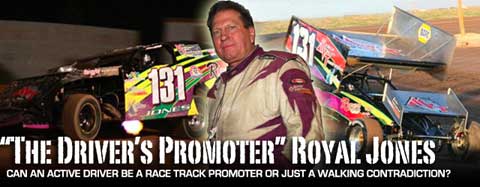
We’ve often heard that racetrack promoters are greedy, beady-eyed little guys that are only one notch above lawyers on the evolutionary scale. Drivers, on the other hand, are hard working, under paid, stars of the show. Promoters do what promoters do and drivers do what drivers do. Stealing a line from Kipling; “East is East and West is West, and never the twain shall meet.” Until now.
About Royal Jones
Meet Royal Jones, driver of the #131 Renegade Sprint and the #131 USRA RHS Modified, a man who is also co-owner/promoter of Southern New Mexico Speedway and El Paso Speedway Park. When Jones isn’t racing or promoting his racing venues, he indulges in his “hobby” as the co-founder, CEO, President and majority owner of Mesilla Valley Transportation, one of the largest trucking companies in the Southwest. Mesilla Valley Transportation (MVT) has a 32 acre terminal in East El Paso with over 1,000 trucks, 3,500 trailers and 1,120 employees which includes 800 company drivers. With an annual revenue around $200 million, Jones is not only a serious racer, he is serious about business.
3,500 trailers and 1,120 employees which includes 800 company drivers. With an annual revenue around $200 million, Jones is not only a serious racer, he is serious about business.
If you’ve gotten the idea that Jones is a busy man, you haven’t even begun to get the full picture. He also owns a truck driving school; Mesilla Valley Training Institute, a new and used truck dealership; Border International Trucks, a truck leasing company; Ideal Lease, a transportation and warehouse brokerage; J.H. Rose logistics, a Las Cruces rental property company; Royal Properties, an insurance company; Grindell and Romero Insurance in Las Cruces, and he’s part owner of Global Alternative Fuels, a company in El Paso that specializes in biodiesel fuel.
By comparison, Royal Jones makes that guy that owns Eldora Speedway look like a slacker.
Setting the Record Straight
Before we start painting the picture that Royal Jones is one of those greedy, beady-eyed track promoters, lets set the record straight. Promoting some of the bigger modified shows with substantial payouts, Jones is known for putting all of the money from the track, back into the track and racers. The trucking business actually invests substantially into the track to keep the driver payouts at a level that Jones considers fair. “I have to work pretty hard at my primary job to make more money than the track can loose,” says Jones.
Jones is a straight shooter and he’ll tell you exactly what he thinks, without hesitation, and with his strong business background, his words are pretty telling. “I think the car counts are going down at many tracks. Not so much because of the economy but because a guy can’t race his Saturday night motor against the big spenders,” Jones says. His observations are based from the perspective of affordable racing. Not because he is a budget racer but because he looks out for the budget racers.
It’s clear that racing is a passion for Jones. We can’t even imagine trying to get ready to race and having to moderate disputes between drivers, making sure that the fans are content, the concessions are running well, bathrooms are clean and the track surface is ready for racing.
Getting ready to race and strap ourselves into the car, the last thing we would want to worry about is a spectator getting a burnt hamburger. So we wanted to know what made Royal Jones tick. We called Jones and grilled him about burnt hamburgers, promoting races and trying to compete on the track. Is this guy a glutton for punishment or what? Here’s how the conversation went:
OneDirt.com: How did you get your start and end up as a racetrack promoter?
Royal Jones: “Well, we started racing at Southern New Mexico Speedway in ’81 or ’82 and as racers do, we would sit around and talk about what we would do if we were the promoters. Then in ’84 and ’85, Jimmy (Ray, co-promoter and business partner) and I won so many races that it wasn’t really any fun being in the stock car class anymore, so I went and bought a late model. The track only ran late models once a month, so we’d go to Tuscon one weekend, Manzanita the next weekend, take one weekend off and then race here.
“Then in the end of ’92, the county commissioners came to us and said that they were going to do something different with the track and asked if we would take over running the track. There was some stuff going on with the track and they were going to have to change or close the track if they didn’t find somebody to run it. Jimmy and I saw it as 'put up or shut up,' so in ’93 we took over the track and we’ve been running this track ever since. We’re learning everyday. We’re not perfect but we’re still running.
“One thing that I did learn early on was that if I spent more time promoting the track myself, we could actually make a go of it. It was going to be tougher and cost more. Let me put it this way; in ’94 the track made eight thousand bucks but MVT lost a million bucks while I was out screwing around with the track. It came down to simple business. I told my partner at the track that I can make MVT make more money than you guys can lose. Hopefully the track can make money, and any money we make we put back into it but the goal is not to lose money. MVT has always been there to offer support to the track cause we love racing so much.”
OneDirt.com: So, your biggest challenge was making sure that your primary business didn’t lose while you were trying to promote and run a track?
Jones: “Yeah, so I don’t really do much promoting or running the track anymore. I mean, you can’t help doing stuff everyday for the track but I’m not out there beating on doors and looking for sponsors. I have other people doing that. We might be a little complacent as far as the track stuff.”
OneDirt.com: If that’s the case, how do you get all the national attention that the track gets?
Jones:” I don’t know. I guess that we are always pushing to do things better. I have a personal appetite to try and do things better. I just don’t go crazy with it. We don’t spend too much money out there, we just try to maintain it. Another consideration is that we don’t own the track we just lease it. We can’t invest a lot into the track because they could always replace me.”
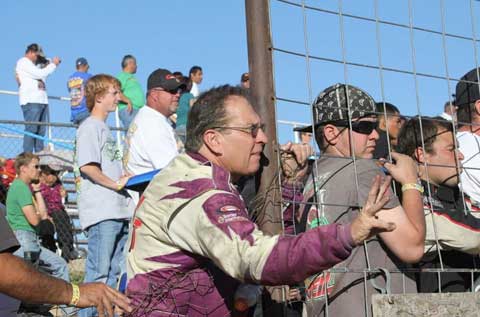
OneDirt.com: So how is it working with the fairboard?
Jones: “We try not to ask them for anything during the year. If we don’t talk to them, they kinda forget that we are out there. As long as we don’t make any mistakes, do anything wrong or make any waves, we’re ok. We tell the racers in the pit meeting; If you get into a fight, that’s just going to happen. Don’t use a weapon, we’re ok with it. But if you’re going to do anything that makes someone call the county sheriff or the ambulance, it’s a problem.
What happens out here is that you call the ambulance once and there’s no problem but if you have to call them back out, they can’t come back without bringing the county sheriff with them. So then there’s a report that goes back to the county and the press gets ahold of it. You can’t get any press out here unless it’s bad press. We end up looking like a bunch of hillbilly inbreeders that are fighting and drinking. We are, but we don’t want everybody to know it [laughs].”
OneDirt.com: We’re having trouble believing you, that you don’t do much promoting of the track. You run in three classes at the track yourself. You have a son and a daughter that race, your co-promoter races…you’re doing something to make this all work!
Jones: “Oh yeah, we’re just not doing it full time. Last year I told my track manager that we’ve made it too easy for her to ask for money. I told her to take a look at what those guys at Tucson are doing. When they have a big race and payout coming, they’re on the phones looking for sponsors. They don’t have an MVT to go to for money. Actually, this year she has done a great job of getting more people, finding more sponsors or more money so MVT doesn’t have to put as much into it.
I love racing and I love the big shows. I love doing the big shows when it’s fair. We were the first ones to have an rpm limit in the modified and now everyone’s doing it. We were the first ones in ’93 or ’94 that allowed Brinn racing transmissions. This was what we were doing in the late models and asked why are we running that 30 or 40 year old transmission in our modifieds? I think our truck experience and our late model experience lets us see beyond the way it’s always been.”
OneDirt.com: Racing transmissions, RPM limiters and quick change rear ends lends itself to modified racing outside of some sanctioning body’s rules. Is that what lead your track to USRA sanctioning for modifieds?
Jones: “Yes. I didn’t want to go with the IMCA because they are still stuck in the mud and trying to portray an image that isn’t true. They want to be angry at people with money and make racers without money think that they have a chance when actually it’s things that are logical and things that don’t make sense. Limiting RPM makes sense and brings the motor field way more together. With RPM limiting, you have guys out there winning whether they have money or not. What you need is for everyone to be able to race.
It’s kinda pointless to make open rules when a racer will do whatever it takes. You’ll sacrifice your family and your house payments to rev up to nine thousand to keep up with Ryan Gustin who is not paying for any of his own stuff.
I think next year the USMTS will have an RPM rule. It’s like the quick change (rear-end). Why wouldn’t you want to have a quick change rear end? There’s no racing advantage in having a quick change, it’s cost and convenience. With a quick change, if you’ve got the wrong gear in for the track, you can quickly change the gears. As for economy, you can get 10 quick change gears for 590 bucks or you can get one set of Ford 9” gears. You know what I mean?”
OneDirt.com: Yes Sir. You’ve always promoted affordable racing. Your switch to the USRA was because of the American Racer tire which your drivers said is more affordable to them. You said at the time that “you have to race what the area can afford.” Can you tell us more about that?
Jones: “Sometimes people think that quick changes and Brinn transmissions cost more. They don’t cost more and they sure cost less in the long run. You can get a bad ass Ford rear end for a thousand bucks and you can get a quick change for fifteen hundred, it sounds like more but in the end, you actually have the ability to get all those gear sets with the quick change makes it more economical. Or, if you get in a bad wreck and bend the axle tube, for a hundred bucks you can get a new one. That rear end is designed to be raced and repaired.
The RPM rule really limits itself to meet the quick change. Say you have a guy that thinks it’s a 5.23 gear for the night and he gets out on the track and it’s faster than holy cow and you’re revving your motor too high, do you think he’s going to get out of it? Well the rpm chip does that for you. If it’s a nine inch Ford you’re hoping that the track is going to dry out later and the track will get slower. Consequently, if you get out on the track and it’s too fast and heavy and you got too much gear in the heat race and you rev the crap out of it, you could blow the motor up. We don’t blow up that many engines around here anymore. The quick change allows you to put the right gear in at the right time. These things keep you from blowing your motor up. So which way is really more affordable?
The Brinn is also cheaper. You can get a Brinn for fifteen hundred dollars or you can buy a powerglide that blows up every three months for six hundred, or you can get a standard transmission for four or five hundred and buy an eight hundred dollar mini clutch that might come apart and blow your legs off. So you have to add a scatter shield. The quick change and Brinn might cost you more up front but they are cheaper and made for racing so you’re not replacing them.
We were with UMP for a long time. I like UMP and I like the people there because they really care about racing. But, they’ve got wide open motors and no rpm limit. They like to be on the Hoosier tires because of sponsorship but they cost $117 and wear out faster. The KK704 American Racer tire is what lead us to go with the USRA instead of Non sanctioned or UMP. With UMP we could race whenever we wanted but we needed to be on Hoosier tires. We couldn’t find a tire like the KK704 that ran as well or as long.”
OneDirt.com: Well, whatever you are doing it’s working because you have some major events at your tracks. The Chub Daniels memorial and Fall Nationals are pretty serious modified events. What else do you have planned?
Jones: “I don’t do as well in my March USMTS show as well as I do with the fall show. We’re talking with Todd* about making the March show a three day deal but nothing is certain yet. I don’t like the 8” spoiler either, because this is a class that I think is suppose to be somewhat “unhooked”. Drive the car if your gonna drive the car! I think that putting those big spoilers on there is like putting training wheels on the car. They should just cut it out. I could probably live with that but another thing in addition to the spoiler is spec heads. I got 30 guys around here that have been racing the same old fuel heads for years and I’m not going to have three guys with spec heads on Saturday night and all of my regular guys running on the same old heads that they’ve always run. I can’t cheat or disadvantage my guys just because of the economy.
We don’t have killer engines. So if I end up doing a USMTS show in March, you can bet it’ll have an RPM limit or we won’t run it. There’s no way I’m going to let Gustin come in here with a 9400 RPM unlimited motor and run against these budget guys. If you want to spend that much money on racing, go run with the world of outlaws late models.”
OneDirt.com: Do you think crate engines are the way to go with Saturday night weekly racers?
Jones: “I think crate engines are a real good way to go. We tried a CT525 crate engine last year in my daughter’s car but we didn’t know what we were doing and had a problem with the timing. We traded the motor to Jimmy because he thought he wanted one. So we traded him the motor and we sent the box back to MSD and told them that the box wasn’t working properly. They asked us how we were setting the timing and I told them that I set the timing then hit save and closed the program. They asked if we ever hit “transfer the data?” So it ended up being a user error and my daughter was running on zero degrees of timing. Now Jimmy has the motor and he’s got about 40 nights on it.
But here’s a motor that you can buy for seven thousand dollars, and you can run 50, 60 or 70 nights before you freshen it. A lot of guys are running racing gas in those things and what a lot of guys keep missing here is that these engines were designed to run on premium unleaded. Why would you want to put ten dollar a gallon gas in a motor designed to run in a 650 horsepower Vette? Would you put ten dollar a gallon Sonoco race gas in a Vette or would you just go down to the Shell station and fill it up on premium unleaded?
Racers bitch about twenty five dollar pit passes and the purse ain’t enough and all that, when a guy could save eighty to a hundred bucks a night by using regular gas instead of racing gas.”
Conclusion
While Jones does watch out and defend the budget racers, he does understand that there is some mentoring that needs to take place in order to change the thought process of both the drivers and the sanctioning bodies. When answering the question; 'Is Royal Jones a contradiction?' You have to listen to the statements that he makes and understand that it’s all about business and not emotion. If racing is your business, you need to treat it like a business. Jones helps his racers treat it like a business.


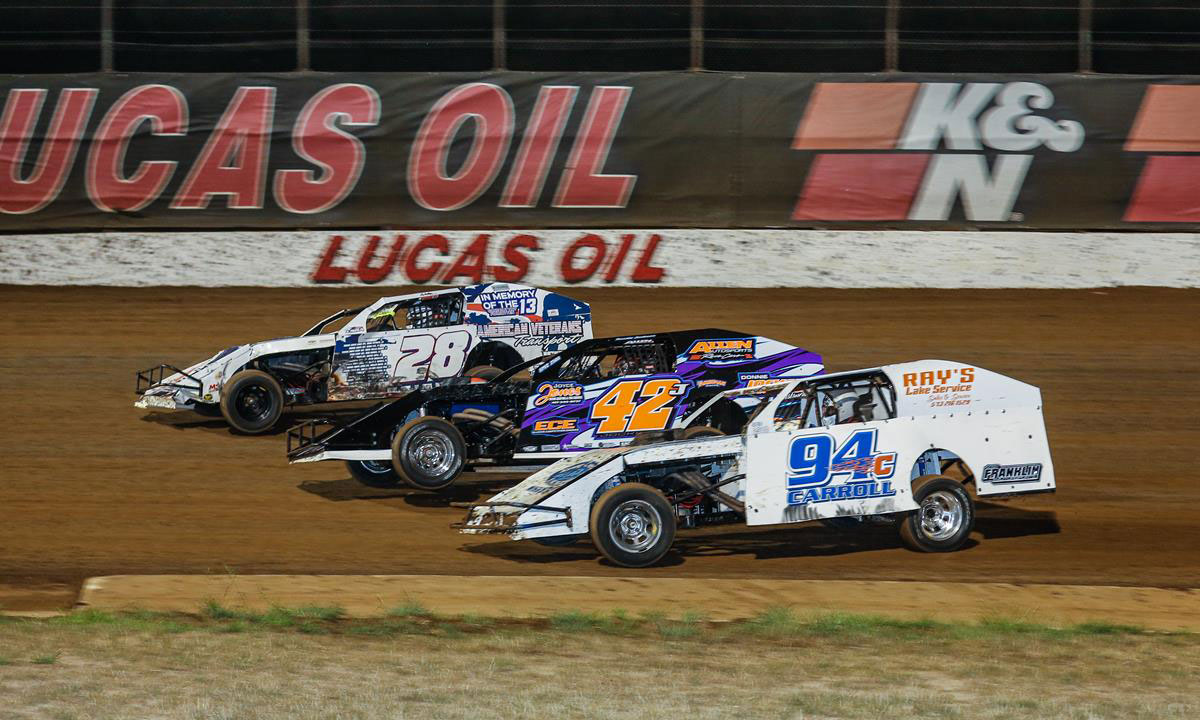
.jpg)
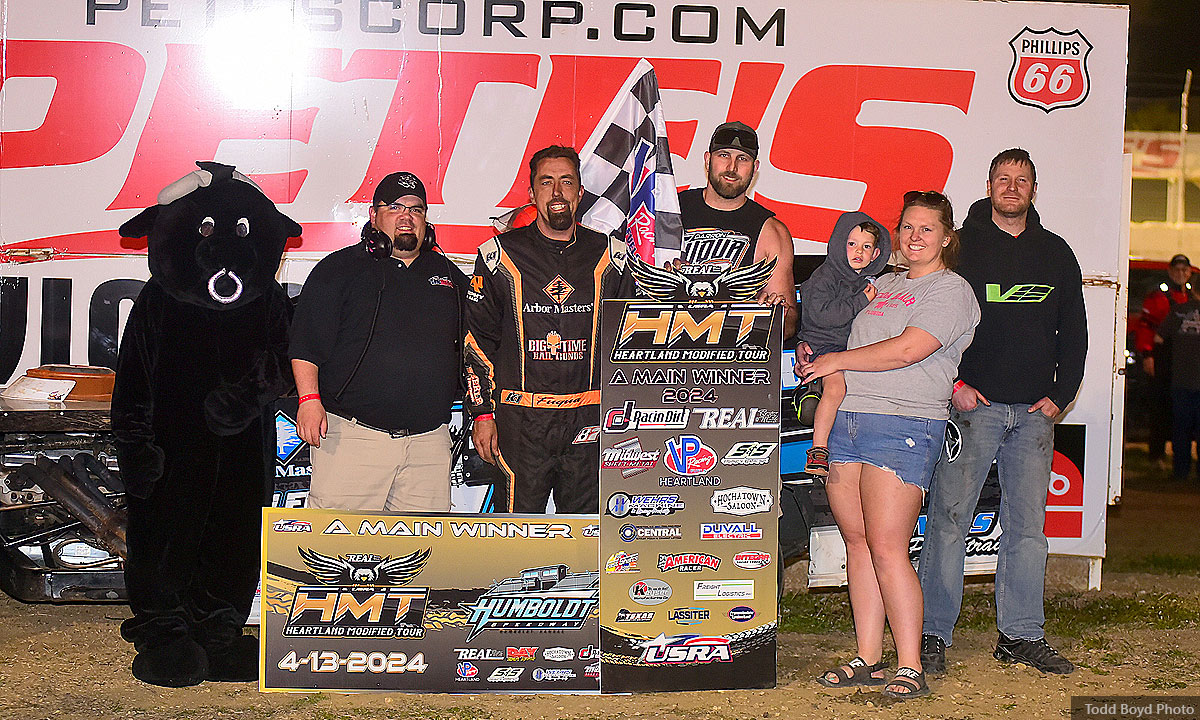
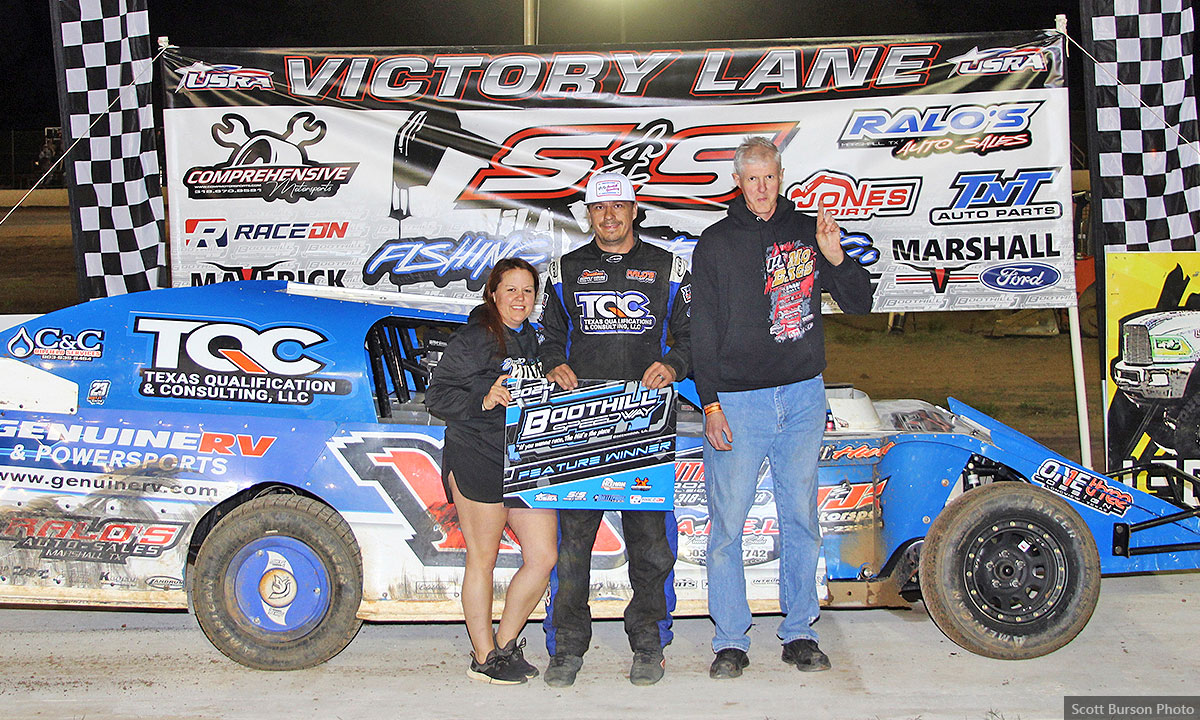
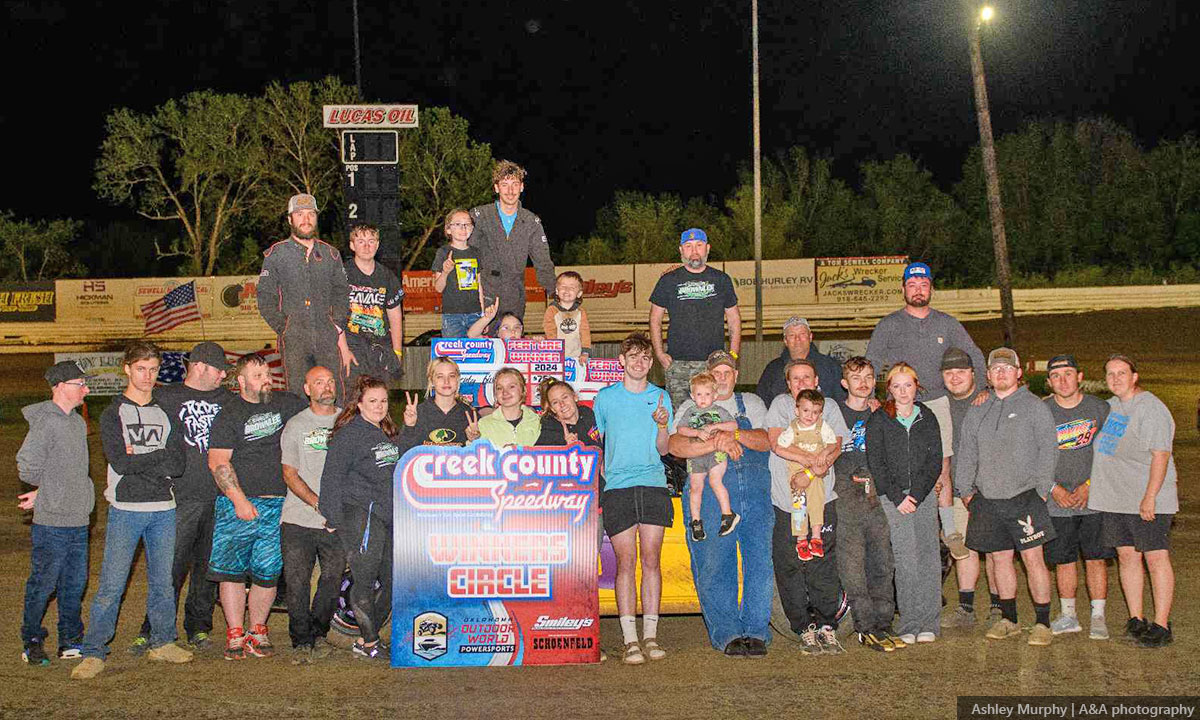
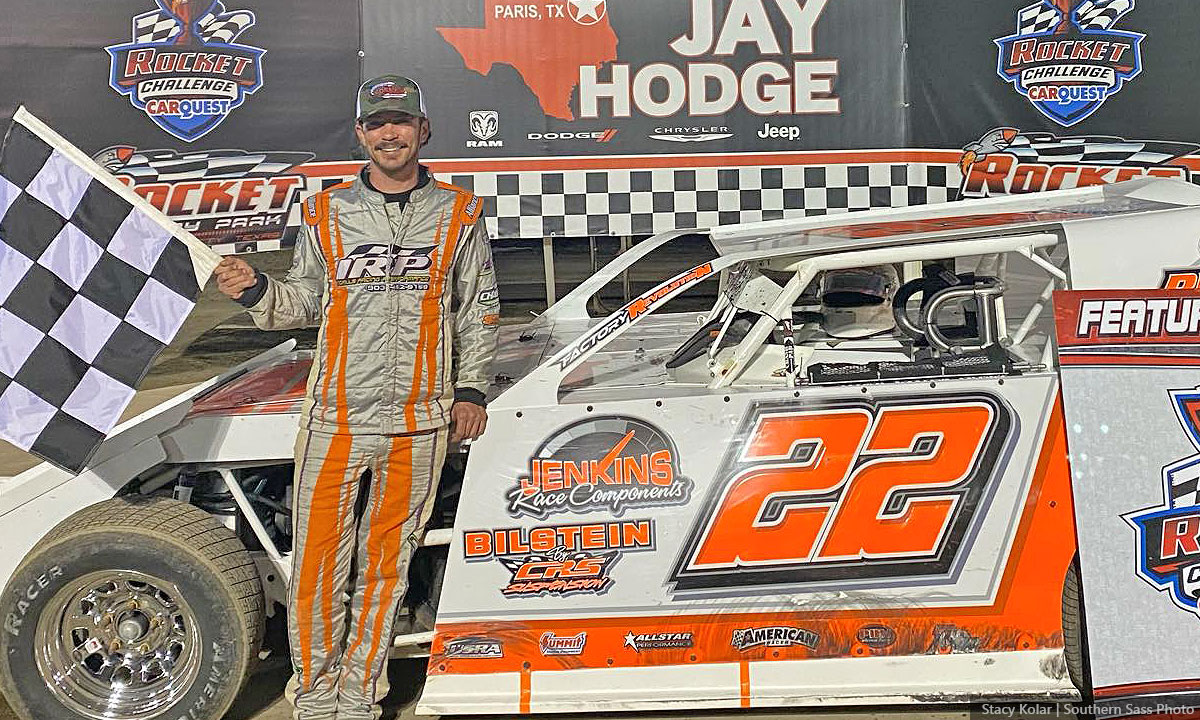
.jpg)
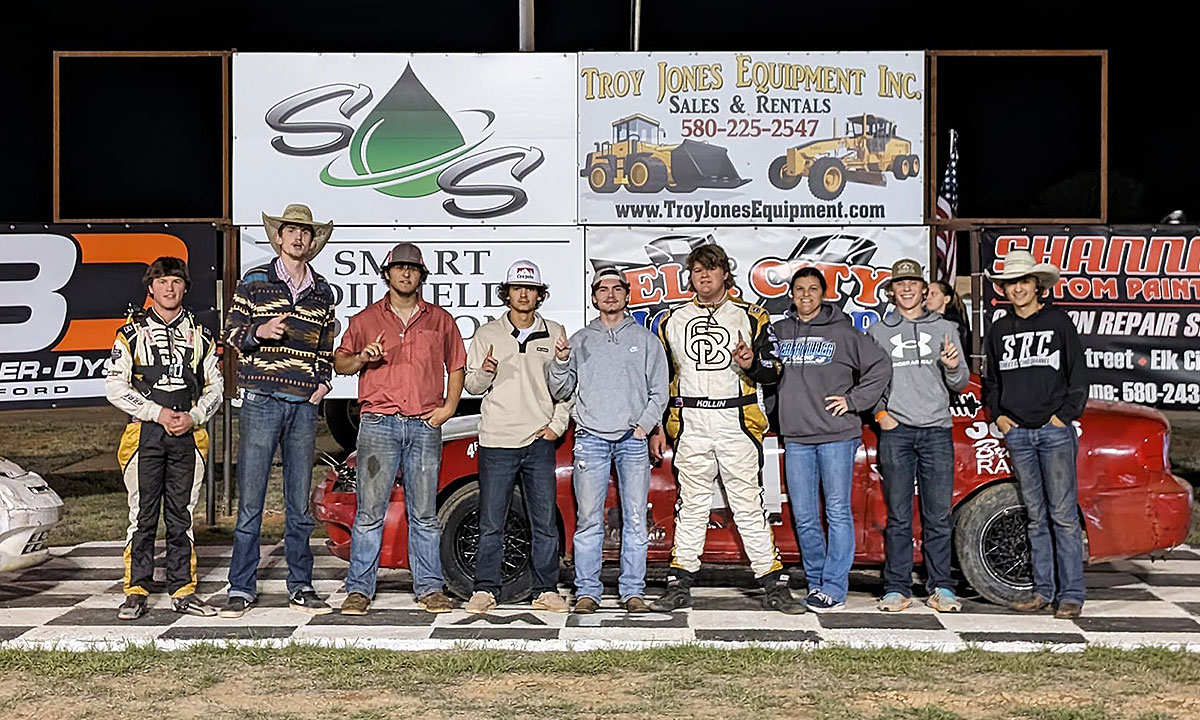
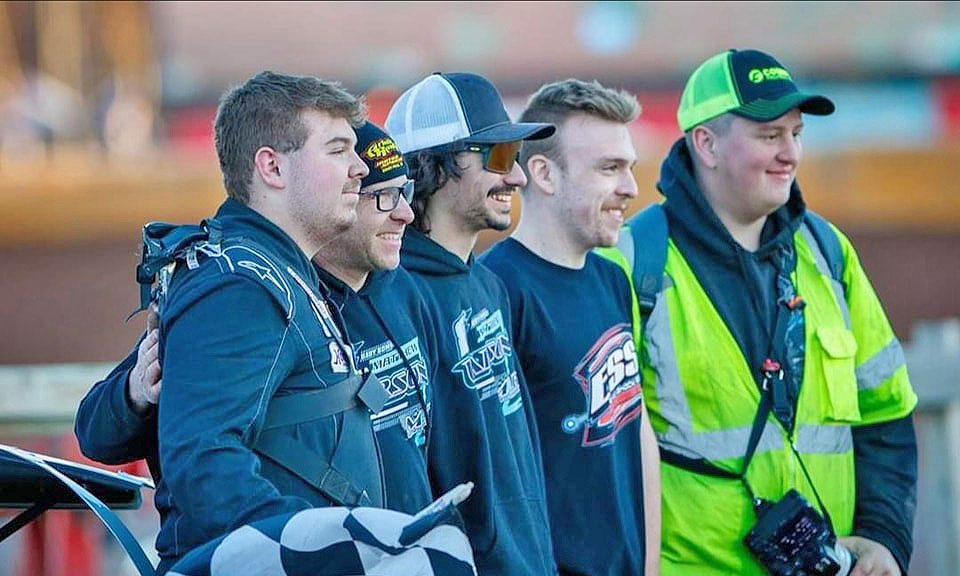

.jpg)